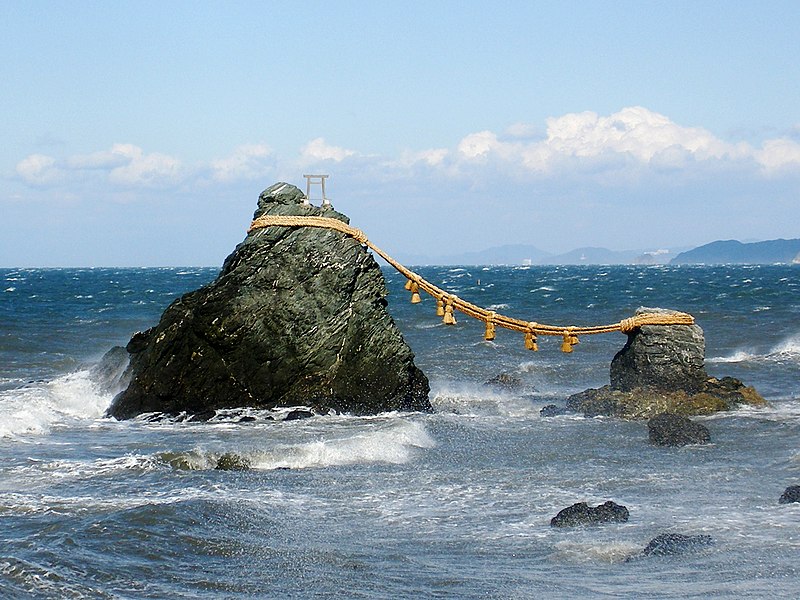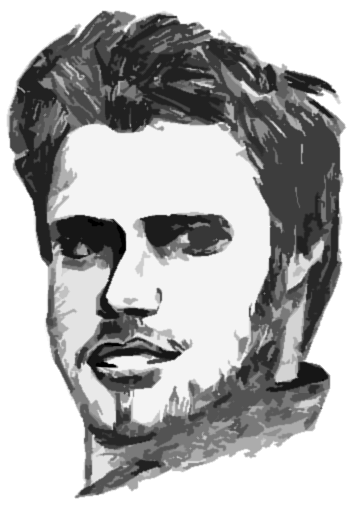Stylistic Aspirations: Inoue Takehiko
Looking through Artbooks yesterday, I think now that Brett Whiteley's sumi-e self portraits are probably the best contempory zen paintings, because they didn't go for the all so alluring Japanese pop-culture feel.
Not surprisingly I will hop and skip to today's artist, Inoue Takehiko. And to those in the know I will boldly declare that if it was a choice between Inoue and Alan Moore (probably tomorrow) I choose Inoue. Of course Alan Moore doesn't draw or ink his own comics, but in many cases will give a half page description of what he wants in a panel that doesn't leave an artist much room. In moore's case it's a lack of technical ability, not a lack of vision.
But Inoue as a writer is to feeling what Alan Moore is to thinking. Inoue captures the human experience. He also uses straight lines and sharp edges far more in his cross hatching and faces, something I prefer too.
Early on my embarking of fowp, I went round to Harvard's to raid his drawing reference books. He had a copy of Sumi: available from Amazon.
available from Amazon.
Which harvard would barely let me touch and would not hear of lending me a copy. He also put on a dvd of 'how did he draw it' which youtube review describes as a 'spectacular' 3 hour dvd. I think the use of Spectacular is kind of an exageration, perhaps an act of taking as much license as possible.
The DVD doesn't have the annoying music, it is mostly silent. But it is good for my blog to have numerous examples of the man at work. Turns out 'How he draws it' is through a technique he has put at least 10,000 hours of development behind.
Perhaps the only useful tip I picked up was to draw the anatomy first then put the clothes on top of it. But alas I barely put 8 hours prep in before I started drawing so I really needed to.
He uses loose pencils, often only putting in the jaw line and facial expression and then details all come in in the inking phase.
I mean amongst the 'myriad' differences that make up the vast ocean between his drawing ability and mine (and not just geographical, 'the pacific ocean' and all that) perhaps the most obvious is the use of brushes for inking.
This I'm not sure how to practice, but I guess I will give zen paintings a go, a little brett whitely style, a little inoue style.
The things I like the most about his stylism though is perhaps how uniquely he portrays both genders. From as early as the slam dunk days he already had his repertoir of faces more or less down, you can pick up vagabond and slam dunk and recognise the same faces.
Musashi is Sakuragi, Otsu is Haruko, Akagi is Denshichiro Yoshioka etc. But without degenerating into the somewhat useless, guess the sexual preferences of an artist game, Inoue captures what Germaine Greer would call 'the beautiful boy' like Michelangelo was so adept at, In my view his ability to combine youth and masculinity into appealing characters is actually much less faggy than the standard manga 'cool character' archetype that usually involves dressing up the 'cool guys' in a bon-jovi meets David Bowie and a bucket of hair product sense.
If there's anything manga artists suffer from in general, it's androgeny in their male characters. Equally on the women's side, Inoue doesn't infantilise the women into 'kawaii' characters. In slam dunk Ayako is a tomboy whilst not being an overt lesbian and Otsu in Vagabond is a girl-become woman. In the text Inoue uses 'beautiful' to describe her, even though he has described her as 'cute' himself. Alas the war against cuteness is an 'egg breaking against a solid wall' and Inoue is falling by the wayside.
Anyway, comparing Takehiko to Michelangelo may seem hyperbolic, but his line work has that effect on me. It is so similar to the rest of manga with obvious nods to the archetypes, just like walking through the Uffizi gallery in Florence will drag you past 'Crucifiction' after 'Crucifiction' and you would honestly struggle to tell most of the lesser artists apart.
But when you are looking at a Botticelli, Da Vinci or Michelangelo, you know you are looking at a Botticelli, Da Vinci or Michelangelo. Just like I recognised Vagabond as by the same artist that did Slam Dunk even though my first exposures to each were 5 years apart. And considering the steaming, heaping mounds of shite manga one has to wade through to get to something even remotely interesting, Vagabond and Slam Dunk are islands akin to the beautiful husband and wife rocks at Ise Peninsula amongst this sea of shite.
But I could use that metaphor to describe just about any of the artists featured here.
As a storyteller, Inoue is 'the big gun' because he does it all. He uses Zen-scrollwork lines to convey powerful sword strokes in intense full page spread combat scenes that could never be captured in any other medium but the comic book. In a movie it would come across as unspectacular, perhaps only the intense duel at the end of 'Sanjuro' or the three way shootout in 'The Good The Bad and The Ugly' come close, but even then they have nowhere near the power of Denshuru staring up through his severed fingers at the sky as his entrails fall onto the ground or Seijuro Yoshioka realising he has been cut in half after the patent dark downstroke inked line of Musashi and he going head to head.
Nor is there anything more energizing than looking at Sakuragi swat the ball out of an offensive players hands in the national championships. He really uses the comic medium to freeze these moments.
Slam Dunk probably gives the best examples of pacing, in my opinion he is better at this than Frank Miller in his hey day. You really feel like you've played a game of basketball reading it, as he shows the fast break transitions, getting back on defence and so fourth all in a few panels. Action sequences are the hardest thing to do well, broadly speaking you have to cut down the panel size, lose the dialogue, if you are crap, an abundant use of motion lines, if you are good a careful selection of 'snapshots' if you will from a live sequence that allows your mind to fill in the blank and create a smooth image in the head.
This is what Takehiko does. He does it all infact, his landscapes too are breathtaking, like the zen scrolls that depict cliffs and mountains, and streetscapes that seem to really be full of people, instead of drawing in a bunch of silhouettes and calling it a day. (as I do) Harvard tells me this tedious detail work is what apprentices are for, and maybe he does just palm off some loosely inked pages to some stooge and say 'I need you to cross hatch in all the maple leaves' or something soulcrushing like that, but at least he can compose the scene settings really well. This is also no mean feat since Japan has systematically set about destroying or obscuring with telephone wires the vast majority of its traditional architecture.
Then he does metaphores and substances really well too, one of the most poigniant bits of comic book writing and execution I have seen is Musashi confronting the Yagyu master who lies on his sick bed. In an initial moment of dissapointment that this will not result in any fight sequence, you are then swept away by some of the most powerful writing I have personally ever read.
The 'what is invincible? It is just a word' forms a lot of my world view now, not even Alan Moore managed to do this with much deliberate effort in V for Vendetta. And the sequence he uses is something I highly recommend everyone knucle down and read if you are at all interested in comics.
To me, while recognising Takehiko as one of the 'ultimates' of the medium, and I do have a pie in the sky idea of something I could use his stylistic influence on, at the same time I'm acutely aware of my own desire to differ from him.
Most notably I feel more desire to write about social issues and economic metaphores more than the spiritual/philosophical. I also have a strong preference for one-shots. Do a story about an idea then drop it like a rock and move onto the next metaphore, where he does 'journey' type stories, taking an individuals development and plunging into its depths.
My inking is very rudimentary, my characters all flat, it will take a lot of practice to realise them with shading. Infact I have thus far avoided almost all lighting issues entirely. That's something I definitely want to aspire to in Inoue Takehiko's work.
Lastly a final example of the man at work. (on ultra large scale).

2 comments:
what is the name of the DVD where Inoue Sensei draws that is 3hrs long?
I'm pretty sure it's called 'Draw' or 'Draws'
Post a Comment